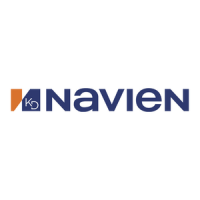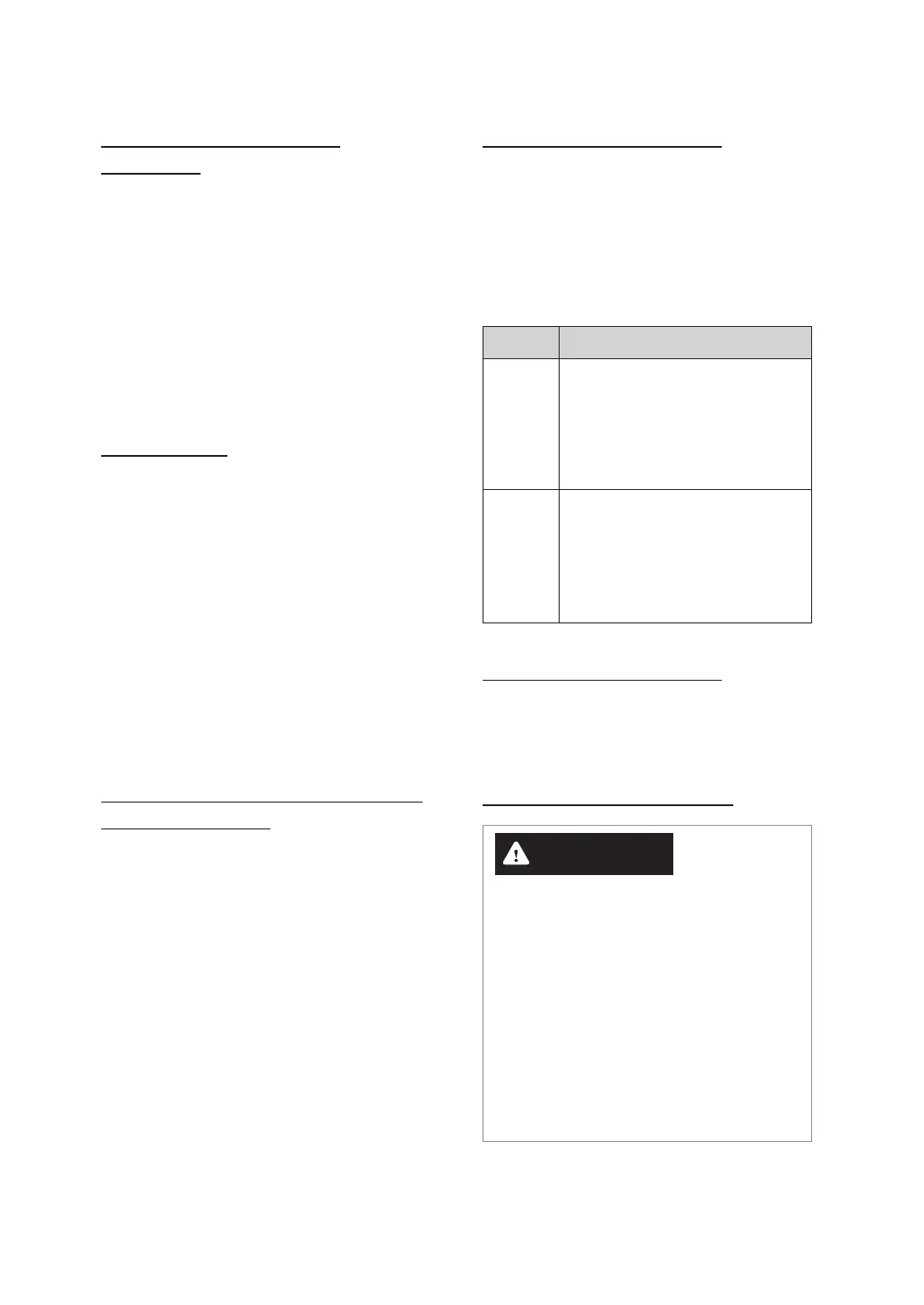76 Installing a Common Vent System
Selecting Vent Pipe Materials
Consult the following chart or the most recent edition
of ANSI Z223.1/NFPA 54, as well as all applicable
local codes and regulations when selecting vent
pipe materials. This appliance should be vented with
materials approved for Category IV gas appliances. Do
not use cellular core PVC (ASTM F891), cellular core
CPVC, or Radel® (polyphenylsulfone) for the exhaust
vent. See below for recommended vent materials.
Locale Recommended Vent Materials
USA
●
PVC Schedule 40 (Solid Core)
●
CPVC Schedule 40 or 80 (Solid Core)
●
UL1738 approved PVC or CPVC
●
Centrotherm Innoflue
Polypropylene
●
Approved Stainless Steel
Canada
ULC-S636 Type BH Special Gas Vent
●
Class IIA (PVC)
●
Class IIB (CPVC)
●
Class IIC (Centrotherm Innoflue/
Approved Stainless Steel)
(Refer to page 52.)
Vent Pipe Pitch and Supports
For horizontal runs, slope the horizontal section
upward toward the vent termination at a rate of 1/4”
per foot (2% slope).
Connecting Pipes with Cement
WARNING
Carbon Monoxide Hazard
To prevent serious injury or death:
●
ONLY use approved venting materials.
●
NEVER mix different types of vent pipe
materials. The vent system may fail and
harmful flue products may leak into the living
space.
●
The use of more than one type of pipe for
the vent piping will void the warranty and
certification of the water heater.
General and Local Standards
Information
When installing and operating the common vent
system, the following standards and regulations
must be complied with and adhered to:
●
Local codes or, in the absence of local codes, the
National Fuel Gas Code, ANSI Z223.1/NFPA 54.
●
Appliance manufacturer’s Installation Instructions.
●
Regulations on the supervision of construction.
●
Statutory provisions.
●
Installation and service work must be carried out
by licensed professionals only.
Risk Guidelines
●
Ensure that all common vent system components
are manufactured and installed in accordance
with valid standards, regulations, and safety
engineering rules.
●
To avoid risk, the common vent system must be
installed and used only for the original purpose
described in this manual.
●
Defects or damages found in a common
vent system must be addressed and repaired
immediately.
●
For roof or chimney modifications, refer to the
relevant industrial safety regulations.
●
Works on roofs and facades are dangerous.
Comply with all relevant regulations.
Cutting and Assembling Common Vent
System Components
Standard tools are suitable for the cutting and
assembly of common vent system components.
Follow the guidelines listed below when working
with the components.
●
When cutting vent components, ensure that the
cuts are straight. Chamfer and deburr all edges
before installing the components.
●
All vent joints must be sealed and airtight.
●
Before operating the system, ensure that the
Installed vent system is clean and free of debris.
●
Ensure that the vent system is rigidly supported
according to the manual’s instructions.

